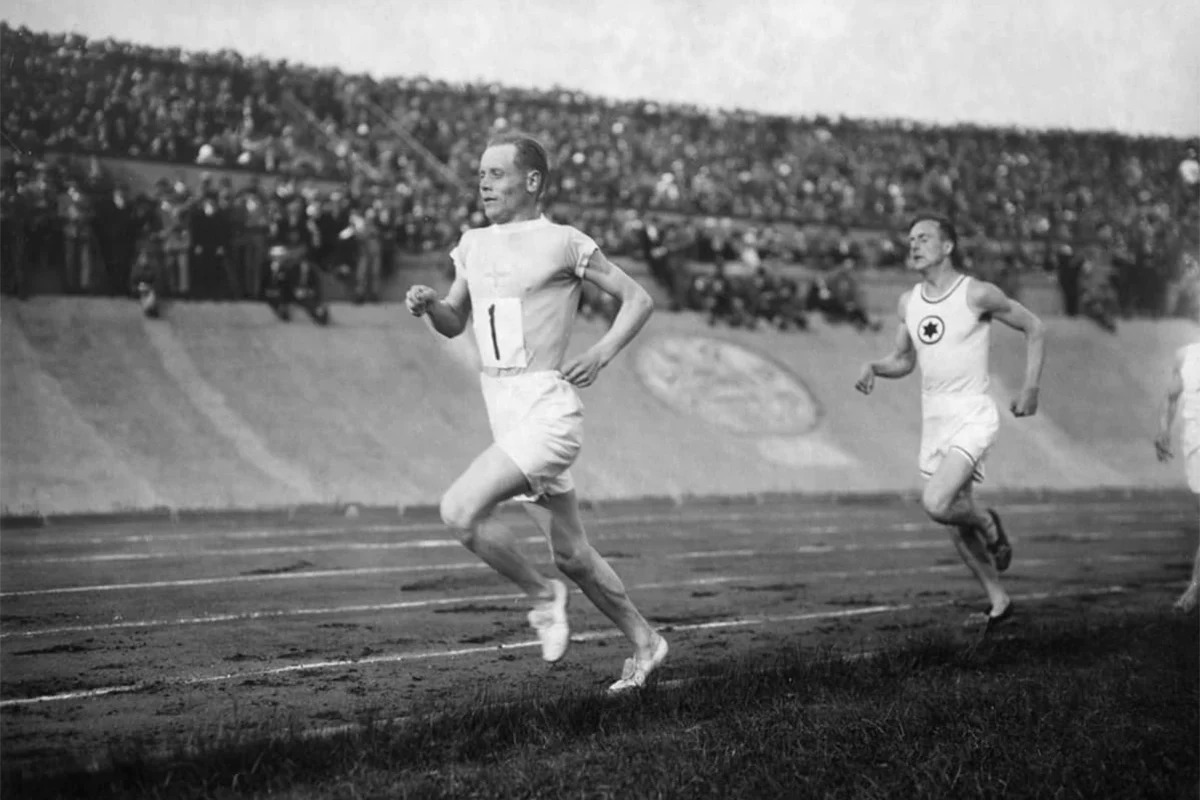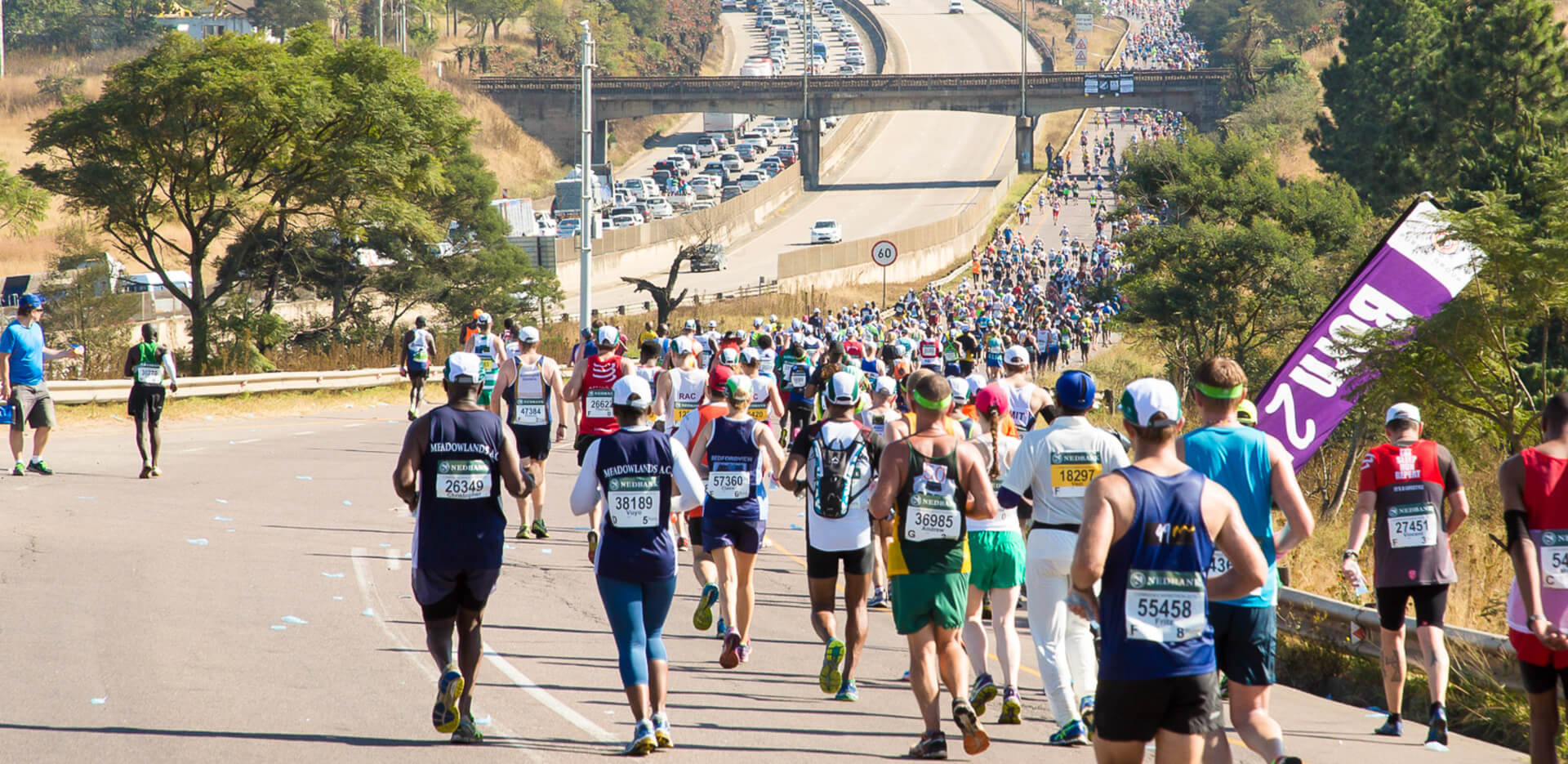

Featured
What Is A Half Marathon Relay
Modified: August 21, 2023
Learn all about the popular half marathon relay race format featured in many running events. Find out how to participate and what to expect on race day.
Introduction
Welcome to the exciting world of half marathon relays! If you’re a running enthusiast looking to challenge yourself and have fun with a team, then the half marathon relay is the perfect event for you. This unique race format combines the thrill of distance running with the camaraderie and teamwork of a relay.
In this article, we will provide you with a comprehensive overview of what a half marathon relay is all about. From how it works to the advantages of participating in one, we’ve got you covered. Whether you’re a seasoned runner or a beginner looking to dip your toes into the racing world, the half marathon relay is a fantastic option that caters to all skill levels.
So, what exactly is a half marathon relay? In simple terms, it’s a race where a team of two or more runners come together to complete the distance of a half marathon – 13.1 miles (21.1 kilometers).
Unlike traditional half marathons where individual participants cover the entire distance on their own, the half marathon relay allows the team to divide the course into sections, with each team member running a designated portion of the race. This way, participants can share the workload, support each other, and combine their efforts to achieve a common goal.
The half marathon relay is a popular choice among running communities for several reasons. Firstly, it brings a sense of unity and camaraderie, as team members encourage and cheer each other on throughout the race. It’s a fantastic bonding experience that fosters a spirit of collaboration and support.
Additionally, the half marathon relay is an excellent option for beginners who might find the idea of running a full half marathon intimidating. Sharing the distance with teammates makes it more manageable and less overwhelming.
Furthermore, the half marathon relay provides an opportunity for runners of different abilities to participate in the same event. Whether you’re a seasoned marathoner or a casual jogger, there’s a place for you in the relay. The team dynamic allows for individuals to contribute at their own pace, making it an inclusive and accessible race format.
As with any race, training is an essential aspect of preparing for a half marathon relay. While each team member is responsible for their own training, there are specific strategies and tips that can help you maximize your performance as a team. In the next sections, we’ll delve into training techniques and offer valuable advice to make your relay experience a successful and enjoyable one.
So, if you’re ready to take on a new running challenge, the half marathon relay awaits. Strap on your running shoes, gather your teammates, and get ready for an unforgettable race that combines achievement, teamwork, and a whole lot of fun!
Overview of Half Marathon Relay
The half marathon relay is a unique racing format that combines the thrill of long-distance running with the spirit of teamwork. In this section, we will provide you with an overview of what a half marathon relay entails, from the course layout to the team structure.
The course of a half marathon relay is typically the same as a traditional half marathon, covering a distance of 13.1 miles (21.1 kilometers). However, instead of one individual running the entire course, teams are formed to divide the distance into segments. Each team member completes their designated portion of the race, passing on a baton or timing chip to the next teammate at designated exchange points.
The team structure can vary depending on the race organizer’s rules. Most commonly, teams consist of two to four members, each running a different portion of the course. Some races may also have special categories for larger teams or mixed-gender teams.
In terms of logistics, half marathon relay events are typically well-organized and provide clear instructions for participants. The race organizers will designate exchange zones and provide transportation between each exchange point for team members who are not currently running.
Participating in a half marathon relay offers a unique racing experience for several reasons. Firstly, the team aspect adds an element of camaraderie and support. While one team member is running their segment, the others can cheer them on, offer encouragement, and provide any necessary hydration or nutrition.
Additionally, the relay format allows individuals with varying levels of running experience and abilities to participate. Whether you’re a seasoned marathoner or new to distance running, the half marathon relay welcomes participants of all backgrounds. It’s a great way to introduce newcomers to the racing environment and foster a sense of community among participants.
The half marathon relay also offers a competitive edge, as teams can strive to beat other teams in their category or aim for a personal best time. The combination of individual efforts and collective performance adds excitement and motivation to the race.
Furthermore, the half marathon relay often attracts corporate teams, charity groups, or friends and family looking to participate together. It’s a fantastic opportunity to bond, create memories, and work towards a common goal.
Overall, the half marathon relay is a thrilling and inclusive event that allows runners to challenge themselves while enjoying the support and camaraderie of a team. Whether you’re aiming for a personal achievement or simply looking for a fun and rewarding experience, the half marathon relay is sure to deliver.
How Does a Half Marathon Relay Work?
Curious about how the mechanics of a half marathon relay unfold? In this section, we’ll take a closer look at how the race works, from team registration to crossing the finish line.
The first step to participating in a half marathon relay is to gather your team. Whether it’s with friends, coworkers, or family members, forming a team of two to four runners is the starting point. Once your team is assembled, you’ll need to register for the race together.
On race day, each team member will have a designated start time based on their segment of the course. The first runner takes off, carrying a baton or timing chip that will be passed on to the next runner at the exchange point.
The exchange points are typically marked along the course, and race organizers will provide clear instructions on where to pass the baton or timing chip. It’s essential for teammates to communicate and coordinate their exchange to ensure a smooth transition.
While one team member is running, the others can provide support by cheering them on, offering words of encouragement, and ensuring they have access to water or fuel as needed. Support stations are usually set up along the course to provide hydration and nutrition to runners.
Once the first runner completes their segment, they will pass the baton or timing chip to the next runner, who will then continue the relay. The process is repeated for each team member until the final runner crosses the finish line, completing the half marathon distance.
It’s important to familiarize yourself with the specific rules and regulations of the race you’re participating in. Some races may have additional guidelines, such as designated exchange zones or specific rules for baton passing. Adhering to these rules ensures fair competition and a safe racing environment.
In terms of logistics, race organizers often provide transportation between exchange points for team members who are not currently running. This allows teams to regroup and support each other throughout the race.
Aside from the physical aspect of running, teamwork and communication are key to a successful half marathon relay. The ability to coordinate exchanges, encourage each other, and work together as a unit adds an extra dimension of excitement to the race.
As with any race, preparation is crucial. Each team member should train for their respective segment and ensure they are ready to perform at their best. It’s also essential to establish a strategy for optimal pacing, taking into account the varying distances and terrain of each segment.
By understanding how a half marathon relay works and preparing accordingly, you and your team will be well-equipped to tackle the challenge, enjoy the race experience, and celebrate your accomplishments together.
Advantages of Half Marathon Relay
The half marathon relay offers a range of advantages that make it an appealing choice for many runners. In this section, we’ll explore some of the key benefits of participating in a half marathon relay.
One of the primary advantages of the half marathon relay is the opportunity for teamwork and camaraderie. Unlike traditional half marathons where runners compete individually, the relay format brings people together to work towards a common goal. This team dynamic fosters a sense of unity and support, as teammates can cheer each other on, offer encouragement, and celebrate together at the finish line.
Participating in a half marathon relay is also an excellent option for beginners or those who may find the idea of running a full half marathon overwhelming. Sharing the distance with teammates allows participants to break it down into manageable segments, making it more approachable and less daunting. This inclusive environment encourages individuals of all skill levels to take part in the racing experience.
Another advantage of the half marathon relay is the opportunity to combine the strengths and abilities of different team members. Teams can strategically assign segments based on each individual’s running style, preferred distance, or strengths in specific terrains. This allows teams to optimize their performance and achieve their best possible outcome.
Furthermore, the half marathon relay often attracts corporate teams, charity groups, or friends and family looking to participate together. It’s a fantastic opportunity to bond, create memories, and strengthen relationships outside of the typical work or social setting. The shared experience of training and completing the race together can be incredibly rewarding and fulfilling.
From a logistical standpoint, the half marathon relay provides convenience and flexibility. Instead of one person having to train extensively for the entire half marathon distance, team members can focus on their specific segment of the race. This can accommodate busy schedules and allow participants to balance their training with other commitments.
Additionally, the half marathon relay offers a competitive edge. Teams can aim to beat other teams in their category or strive for a personal best time. This adds an element of excitement and motivation to the race, pushing participants to perform at their best and achieve their desired outcome.
Lastly, participating in a half marathon relay is a great way to experience the atmosphere and energy of a race without the pressure of running the entire distance alone. The collective enthusiasm, cheering spectators, and overall race-day ambiance create a memorable and enjoyable experience for all participants.
With its team-oriented approach, inclusive environment, and range of benefits, it’s no wonder that the half marathon relay has become a popular choice among runners of all levels. Whether you’re seeking a new challenge, a chance to bond with teammates, or simply looking for a fun and rewarding race experience, the half marathon relay has something to offer.
Training for a Half Marathon Relay
Training is a crucial component of preparing for a half marathon relay. While each team member is responsible for their individual training, it’s important to establish a collective training strategy to ensure optimal performance as a team. In this section, we’ll provide you with some essential tips and guidelines to help you train effectively for a half marathon relay.
First and foremost, it’s essential to establish a training plan that considers both the individual distances and overall mileage of the relay. Each team member should focus on training for their specific segment of the race. This might involve gradually increasing mileage, incorporating specific interval training, and practicing running at the pace you plan to maintain during the relay.
Although you’re training as a team, it’s important to remember that individuals will have different training needs and abilities. Some team members may require more intense training, while others might need to focus on gradually building endurance. Communication is key, as it allows team members to understand each other’s needs and work together to achieve their collective goal.
It’s also essential to incorporate appropriate rest days into your training schedule. Rest and recovery are crucial for avoiding burnout and reducing the risk of injury. Encourage your team members to prioritize rest and listen to their bodies, adjusting training intensity as needed.
In addition to running, cross-training can be beneficial for overall fitness and injury prevention. Incorporating activities such as strength training, cycling, swimming, or yoga can help improve muscular strength and flexibility, making you a more well-rounded athlete.
As a team, it can be helpful to schedule regular training sessions together. These sessions can include group runs, where team members can practice passing the baton or timing chip, practice running at race pace, or simulate race-day conditions. Training together not only enhances teamwork but also allows for constructive feedback and adjustment of strategies.
Nutrition plays a vital role in optimizing performance. Encourage your team members to fuel their bodies with a balanced and nutritious diet that includes a good mix of carbohydrates, proteins, and healthy fats. Hydration is equally important. Drinking enough water and electrolyte-rich fluids before, during, and after training sessions will help keep energy levels up and prevent dehydration.
Mental preparation is just as important as physical training. Encourage your team members to visualize success, set goals, and establish a positive mindset. In the later stages of training, participating in shorter races or time trials can help build confidence and boost motivation.
Lastly, celebrate milestones and achievements throughout your training journey. Recognize and acknowledge the progress made by each team member, as this will foster a sense of accomplishment and keep motivation levels high.
By prioritizing individual training needs while maintaining a collective focus, your team will be well-prepared to conquer the half marathon relay. Training together, supporting each other, and following a well-rounded training plan will not only enhance your performance as a team but also make your relay experience truly memorable and rewarding.
Tips for Participating in a Half Marathon Relay
Participating in a half marathon relay is an exciting and rewarding experience. Whether you’re a seasoned runner or new to the racing world, it’s important to be well-prepared and make the most of your relay race. In this section, we’ll provide you with some valuable tips to help you have a successful and enjoyable half marathon relay.
1. Communication is Key: Establish open and frequent communication with your teammates. Discuss race strategies, exchange points, and pacing plans. Clear communication will help ensure smooth transitions and keep everyone on the same page.
2. Practice Transitions: Set aside time during your training sessions to practice passing the baton or timing chip. Smooth exchanges can make a significant difference in your overall race time.
3. Plan Your Running Order: Consider everyone’s strengths and abilities when determining the running order. Assign teammates to segments that align with their preferences or excel in specific terrains.
4. Pace Yourself: Each team member should run at a pace that is sustainable for their segment. Avoid starting too fast or pushing beyond your limits early on, as it may lead to fatigue later in the race.
5. Support Each Other: Cheer for your teammates, offer encouragement, and provide hydration or nutrition when needed. The collective support throughout the race can boost morale and keep motivation levels high.
6. Stay Hydrated: Drink plenty of fluids in the days leading up to the race and during the relay. Hydration stations provided along the course should be utilized adequately, especially during warmer weather.
7. Fuel Properly: Eat a balanced meal before the race, focusing on carbohydrates for sustained energy. During longer segments, consider carrying energy gels or snacks to refuel along the way.
8. Dress Appropriately: Dress in comfortable and moisture-wicking apparel suitable for the weather conditions on race day. Don’t forget to wear properly fitted running shoes to avoid discomfort and potential foot issues.
9. Respect Other Runners: Remember, you’re sharing the course with other participants. Practice good race etiquette by staying on course, avoiding abrupt changes in direction, and being mindful of others around you.
10. Celebrate Your Achievement: Crossing the finish line is a remarkable accomplishment. Take the time to celebrate with your team, relish in your achievements, and soak up the atmosphere at the finish line.
Remember, participating in a half marathon relay is not just about the destination but also the journey along the way. Embrace the experience, enjoy the camaraderie, and make memories that will last a lifetime. With these tips in mind, your half marathon relay is sure to be a memorable and successful event.
Conclusion
The half marathon relay is an exhilarating race format that combines the joys of distance running with the spirit of teamwork. In this article, we explored the ins and outs of the half marathon relay, ranging from its definition to the advantages and tips for participating in one.
The half marathon relay offers a range of benefits that make it an attractive option for runners of all skill levels. From fostering teamwork and camaraderie to making the distance more accessible for beginners, the relay format provides a unique and inclusive racing experience.
Training is a crucial aspect of preparing for a half marathon relay. With a collective training plan and effective communication, teams can optimize their performance and achieve their goals. Paying attention to nutrition, hydration, and mental preparation is equally important for a successful race day.
During the race, clear communication, smooth transitions, and mutual support are essential. Cheering for teammates, providing encouragement, and staying hydrated and fueled throughout the race can make a significant difference in overall performance.
Participating in a half marathon relay is not just about crossing the finish line—it’s about the journey and the memories created along the way. The sense of accomplishment, the bond forged with teammates, and the shared experience of pushing boundaries make the relay an unforgettable event.
So, if you’re ready to embark on a running adventure that combines individual achievement with collective success, gather your team, lace up your running shoes, and take on the challenge of a half marathon relay. With proper training, communication, and support, you’ll experience the thrill of achievement and create lasting memories together.









